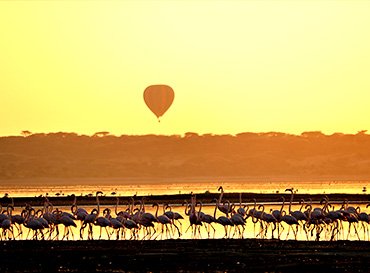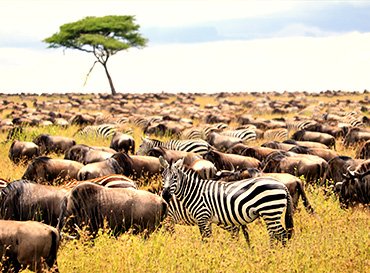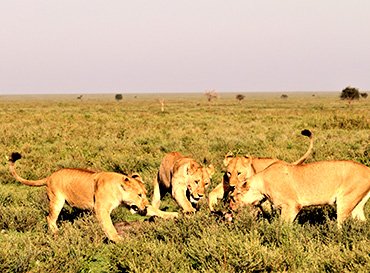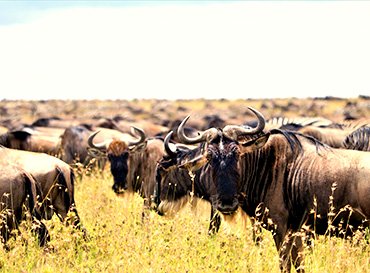Ngorongoro Conservation Area Preview
Ngorongoro Conservation Area is a protected area located in northern Tanzania, covering an area of approximately 8,300 square kilometers. It is home to the Ngorongoro Crater, a UNESCO World Heritage Site and one of the largest intact calderas in the world. The area is also known for its diverse wildlife, including the "big five" - lions, leopards, elephants, buffaloes, and rhinos. Visitors can enjoy game drives, walking safaris, and cultural tours in nearby Maasai villages. The park offers several essential amenities, including lodges, campsites, picnic sites, and guided tours.
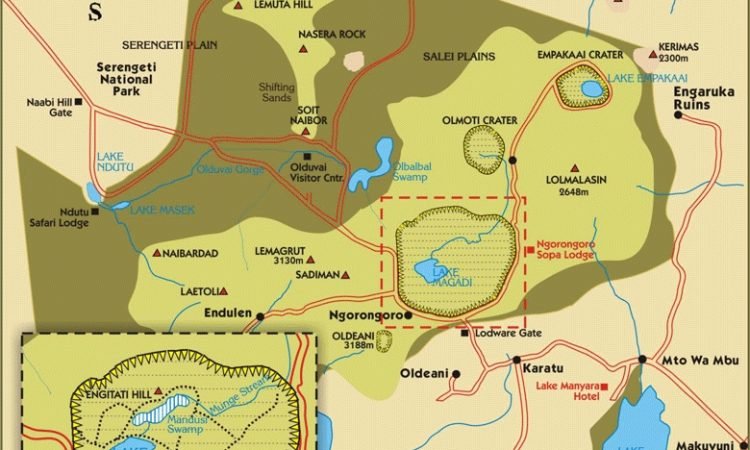
Essential information
PARK amenities
Ngorongoro Conservation Area offers several essential amenities for visitors to enjoy during their trip. Some of these amenities include:
- Lodges and campsites: The park has several lodges and campsites where visitors can stay overnight. These accommodations provide a comfortable place for visitors to rest and relax after a day of exploring the park..
- Visitor Centers: The area has several visitor centers where visitors can get information about the park, its history, wildlife, and conservation efforts.
- Picnic Sites: The park has several designated picnic sites where visitors can enjoy a meal amidst the park's stunning scenery. These picnic sites are equipped with picnic tables, benches, and toilets
- Wildlife Viewing Areas: There are several wildlife viewing areas within the park, where visitors can see various animals such as elephants, lions, giraffes, zebras, and wildebeests..
- Guided Tours: Tarangire National Park offers guided tours led by experienced park rangers. These tours provide visitors with an opportunity to learn more about the park's wildlife, history, and conservation efforts.
- Cultural Tours: Visitors can enjoy cultural tours in the nearby Maasai villages, providing an opportunity to learn about the Maasai culture and their traditional way of life.
- Restrooms: The park has restrooms located throughout the park, including at the picnic sites and visitor center. These restrooms provide visitors with a clean and convenient place to use the restroom while exploring the park.
Overall, Ngorongoro Conservation Area provides visitors with several essential amenities that make their trip to the park more enjoyable and comfortable.
Hotel and Lodges
Picknick Sites
Transport Ways
KNOW MORE
Ngorongoro Conservation Area is a protected area located in northern Tanzania, East Africa, covering an area of approximately 8,300 square kilometers. The area is named after the Ngorongoro Crater, a UNESCO World Heritage Site and one of the largest intact calderas in the world. It is also home to the Olduvai Gorge, one of the most important paleontological sites in the world.
The Ngorongoro Conservation Area is known for its diverse landscapes, including the Ngorongoro Crater, open grasslands, acacia woodlands, and forests. The area is home to a variety of wildlife, including the "big five" - lions, leopards, elephants, buffaloes, and rhinos - as well as other animals such as cheetahs, zebras, hyenas, and wildebeests. The area is also home to over 500 species of birds, making it a popular destination for birdwatchers.
Visitors to the Ngorongoro Conservation Area can enjoy a range of activities, including game drives, walking safaris, and cultural tours in the nearby Maasai villages. Game drives are the most popular activity and provide visitors with an opportunity to see the park's diverse wildlife up close. Walking safaris are a more intimate way to explore the park's diverse ecosystems, while cultural tours provide visitors with an opportunity to learn about the Maasai culture and their traditional way of life.
The best time to visit the Ngorongoro Conservation Area is during the dry season, from June to September, when the weather is dry, and the wildlife is concentrated around the water sources. The area offers various types of accommodation, including lodges, campsites, and tented camps, providing visitors with a comfortable place to rest and relax after a day of exploring the park.
Overall, the Ngorongoro Conservation Area is a must-visit destination for wildlife enthusiasts and nature lovers. Its diverse landscapes, rich wildlife, and cultural heritage provide a stunning backdrop for an unforgettable safari experience.
SIMILAR PARKS
You May Also Enjoy Our Other PARKS
Our Partners
We team up with the best to give you an unmatchable experience








